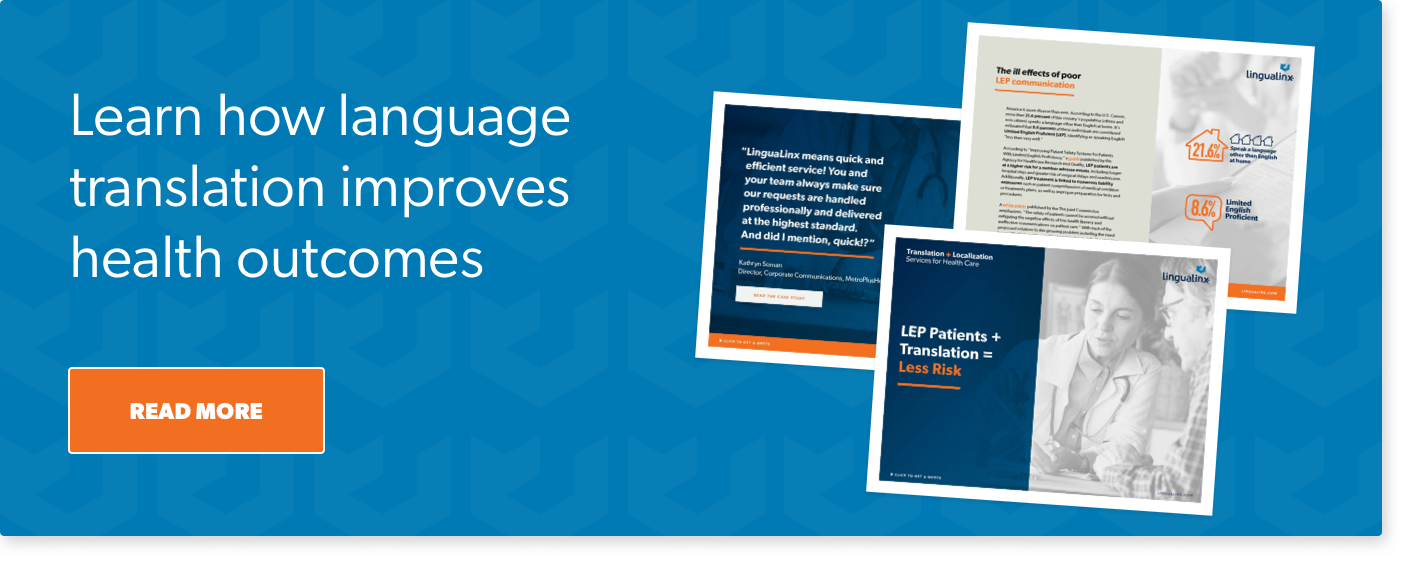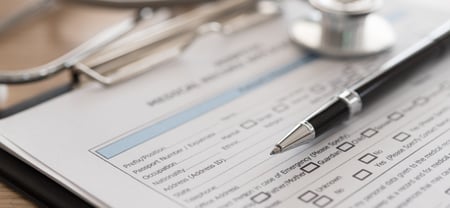In 2015, Smithsonian magazine published an article that identified the critical need for hospital translations at institutions throughout the United States. Providing services to patients with limited English proficiency (LEP) is vital for many reasons.
-
Any information related to the health of a patient is crucial.
-
Providing information to patients in their native tongue is critical and makes them feel more comfortable.
-
Providing language services to patients allows hospitals to reach all potential patients effectively.
So, where do you start?
Interpretation
If a patient is scheduled for an appointment, consultation, or procedure, you will need to have options for communicating with them if he or she cannot understand English. There are interpretation solutions available that help ensure accurate communication of critical healthcare information.
Website Content
In the past decade, the Internet has become the number one source for individuals seeking information on nearby healthcare facilities. They are checking for proximity, services offered, insurance providers accepted, and also reviews. Regardless of a healthcare facility's location – whether it be in the suburbs, rural, or urban – in 2020, it's a guarantee that residents with limited English proficiency are served by the hospital. Therefore, after interpretation, it's critical to make sure your website is translated across multiple languages.
Marketing Materials
 Similar to your website, marketing materials need to be clear and informative. Prospective patients are looking for a healthcare facility that will best meet their needs. Translating your collateral will present information about your hospital to more potential new patients. Work with a language services provider who has multilingual desktop publishing capabilities and can work in all file types.
Similar to your website, marketing materials need to be clear and informative. Prospective patients are looking for a healthcare facility that will best meet their needs. Translating your collateral will present information about your hospital to more potential new patients. Work with a language services provider who has multilingual desktop publishing capabilities and can work in all file types.
Signage
Translating signage makes it much easier for patients and visitors to navigate around the facility. Take a look at the most common languages spoken by your patients and translate your signage accordingly.
Clinical Trial Documents
Anyone who is considering participating in a clinical trial should be fully aware of any risks and rewards for participating in this treatment. Therefore, the translation of clinical trial documents is essential.
Informed Consent Forms
A patient needs to sign an informed consent form before participating in any medical or surgical procedure. If a patient cannot read to understand the information on the informed consent form fully, how informed are they? If a patient has limited English proficiency, then the form should be translated to their native tongue to ensure that they understand the information presented.
Prescription Labels
A patient will need to know the proper way to administer their medication. This comes from translating the prescription labels and instructions into their native language. This will help make the LEP patient aware of any potential side effects or important instructions such as taking the medication with food or drink, avoiding alcohol, etc.
Patient Intake and Enrollment Forms
It is paramount to provide patient paperwork in their native tongue so that they can properly fill out their information. In turn, a patient's written information needs to be translated for the doctor so that they can clearly read patient information. Any medical records from other healthcare facilities, including from overseas and written in a different language, will need to be translated so that the doctor has accurate information about a patient's healthcare history.
Next Steps
For LinguaLinx, being a native speaker in a specific target language isn't enough. It's only one consideration in what has become one of the most demanding recruitment, testing, and certification processes in our industry. Our translation, localization, and subject matter experts have proven that they are the best in the business. Talk to one of our language experts today and be on your way to establishing documentation that's inclusive for all people in your service radius.









